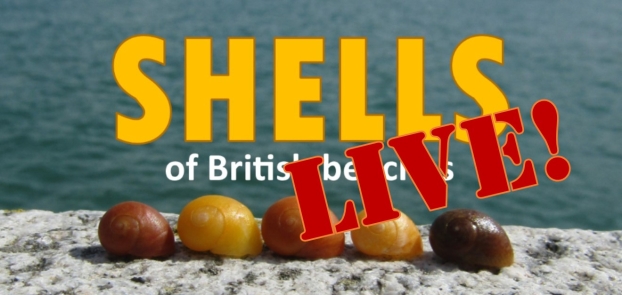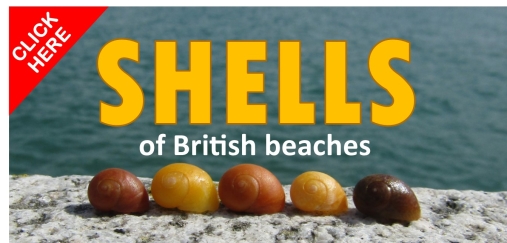

Ever found an empty shell and wondered who lived in it? Which snail made it?
This page aims, through film and photos to tell us about the snails who lived in the shells we find.
King Scallop
Pecten Maximus

Common cockle
Cockles bury themelves in sand and feed through their exposed syphons.

Dog cockle
Glycymeris glycymeris
Blue Mussel
Mytilus edulis
Mussels have a foot which is more tongue-like than many other sea snails. They use it to hang on to rocks and plants and to move around.

Like all clams, mussels are syphon feediers (below)


Mussels attach themselves to rocks, usually in large numbers, by means of byssal threads that they produce (below).

A shore crab attempting to open a mussel shell
Giant Razor Shell
Ensis siliqua
The Giant Razor shell has a strong white foot which enable it to dig down into the sand leaving its syphons, at the pther end of the animals, to remain near the surface.


European Painted Top Shell
Calliostoma zizyphinium


Pennant's Top Shell
Gibbula Pennanti
Atlantic Slipper Limpets
Crepidula fornicata
Slipper limpets live permanently in 'families' with the oldest at the bottom, and the youngest on top.

Rayed Mactra
Mactra Stultorum


Flat periwinkles
Littorina obtusata
Often found on wrack, periwinkles graze on algae.
Their eggs can be seen on this page


Limpets
Patella sp.
Limpets eat algae by crawling across rock faces and rasping at the green layer on them with their tongue.
Turn a limpet upside down and you can see its small head with antennae and its large oval foot.




Dog whelk
Nucella lapillus
The dog whelk has a cream / white body.
They can frequently be seen clustered together in lrage numbers on rocks at low tide, or climbing aboard mussels whose shells they drill through to eat the tasty mussel body inside.



Netted Dog whelk
Tritia reticulata
Netted Dog Whelk on the move. It is possible to see its tall syphon which it uses to 'detect' food. The whelk is a carnivore.
Venus Clam


Arctic Cowrie
Trivia arctica
Common Whelk
Buccinum undatum
The whelk's body is bright white with black flecks.
The whelk's eggs can be seen on this page.

Shells which may be found on the beach
but which are not from sea snails
Garden snail
Helix aspersa
Round-mouthed snail
Pomatius elegans
Round-mouthed snail on the go:
The Snail-hunter beetle likes to feast on snails...but this snail is fighting back. Having trapped one of the legs of the beetle by cliosing its trapdoor on it, this round-mouthed snail has managed to get the upper hand.









